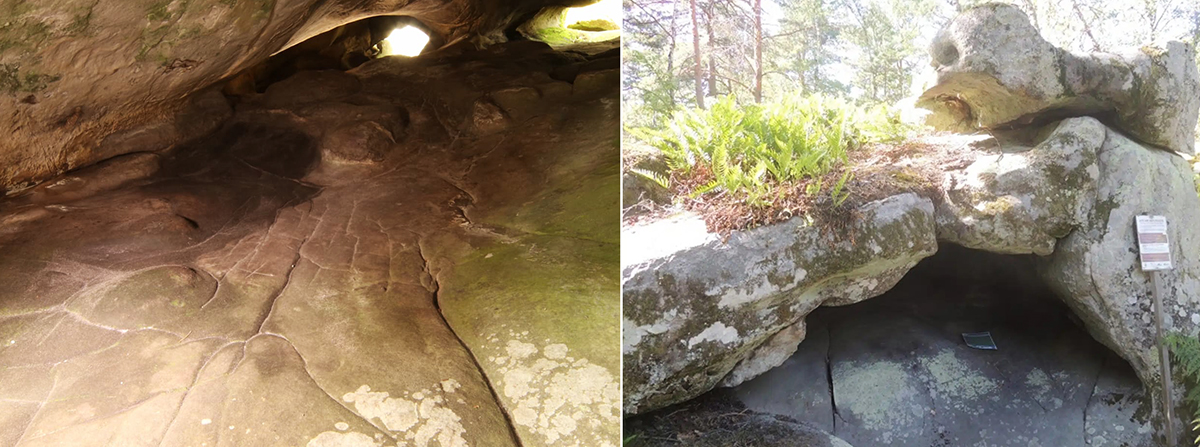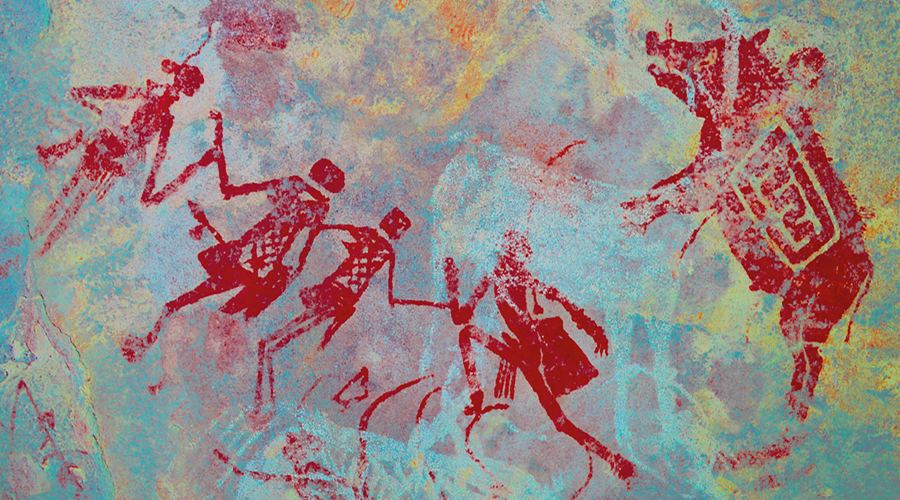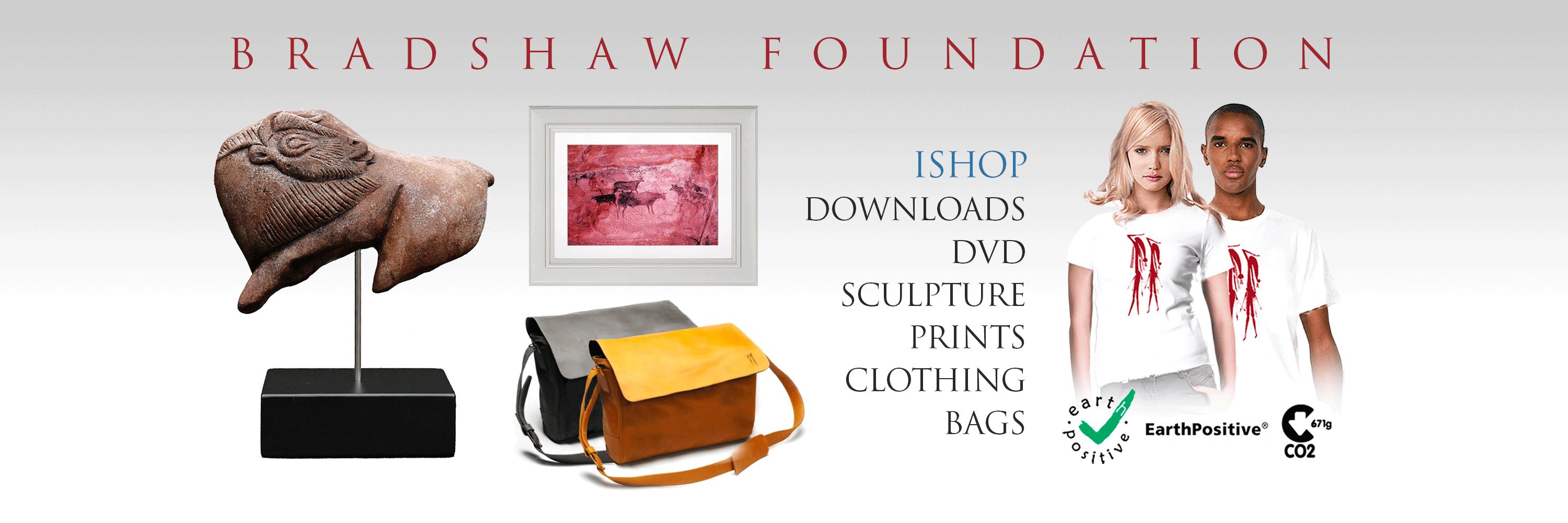


An article by Newsweek science and health reporter Aristos Georgiouis - 'Archaeologists Discover Oldest 3D Map Candidate From 13,000 Years Ago' - reports on the discovery by archaeologists of what may be the world's oldest three-dimensional map.

The 'map' was identified in a sandstone rock shelter known as Ségognole 3, which is located to the south of Paris, France. This rock shelter has been known since the 1980s for its prehistoric engravings of two horses on either side of what appears to be a representation of a female pubic area — what the researchers refer to as a 'sexual figuration'.
But in the latest study, published in the Oxford Journal of Archaeology, researchers have revealed that the site also contains a miniature representation of the surrounding landscape in the form of an engraved floor located in one part of the shelter. This work — which appears to have been created around 13,000 years ago — is potentially a world-first 3D-model of a Palaeolithic territory, according to the study.
The Palaeolithic was the earliest and longest phase of human prehistory, lasting from about 3.3/2.5 million years ago to roughly 12,000 years ago. The research suggests that the 3D model in the rock shelter was shaped in such a way as to reflect the region's natural water flows and geomorphological features.
"What we've described is not a map as we understand it today—with distances, directions, and travel times—but rather a three-dimensional miniature depicting the functioning of a landscape, with run-off from highlands into streams and rivers, the convergence of valleys, and the downstream formation of lakes and swamps," study author Anthony Milnes, with the School of Physics, Chemistry and Earth Sciences at the University of Adelaide in Australia, said in a statement.
"For Paleolithic peoples, the direction of water flows and the recognition of landscape features were likely more important than modern concepts like distance and time.Our study demonstrates that human modifications to the hydraulic behavior in and around the shelter extended to modelling natural water flows in the landscape in the region around the rock shelter. These are exceptional findings and clearly show the mental capacity, imagination and engineering capability of our distant ancestors."
The discovery came after study lead author Médard Thiry from the Mines Paris – PSL Center of Geosciences recognized several fine-scale morphological features that could not have formed naturally. This indicates that they were formed by prehistoric humans. "Our research showed that Paleolithic humans sculpted the sandstone to promote specific flow paths for infiltrating and directing rainwater, which is something that had never been recognized by archaeologists," Thiry said in the statement.
"The fittings probably have a much deeper, mythical meaning, related to water. The two hydraulic installations—that of the sexual figuration and that of the miniature landscape—are two to three meters from each other and are sure to relay a profound meaning of conception of life and nature, which will never be accessible to us."
Reference: Thiry, M., & Milnes, A. (2024). Palaeolithic Map Engraved for Staging Water Flows in a Paris Basin Shelter. Oxford Journal of Archaeology doi.org/10.1111/ojoa.12316
by Bradshaw Foundation
Wednesday 23 July 2025
by Bradshaw Foundation
Thursday 29 May 2025
by Bradshaw Foundation
Monday 03 February 2025
by Bradshaw Foundation
Friday 09 August 2024
by Bradshaw Foundation
Wednesday 24 July 2024
by Bradshaw Foundation
Thursday 04 July 2024
by Bradshaw Foundation
Monday 01 July 2024
by Bradshaw Foundation
Wednesday 20 March 2024
by Bradshaw Foundation
Tuesday 13 February 2024
by Bradshaw Foundation
Tuesday 13 February 2024
by Bradshaw Foundation
Thursday 01 February 2024
by Bradshaw Foundation
Tuesday 28 November 2023
by Bradshaw Foundation
Thursday 23 November 2023
by Bradshaw Foundation
Monday 20 November 2023
by Bradshaw Foundation
Tuesday 31 October 2023
by Bradshaw Foundation
Thursday 26 October 2023
by Bradshaw Foundation
Wednesday 23 July 2025
by Bradshaw Foundation
Thursday 29 May 2025
by Bradshaw Foundation
Monday 03 February 2025
by Bradshaw Foundation
Friday 09 August 2024
by Bradshaw Foundation
Wednesday 24 July 2024
by Bradshaw Foundation
Thursday 04 July 2024
by Bradshaw Foundation
Monday 01 July 2024
by Bradshaw Foundation
Wednesday 20 March 2024
by Bradshaw Foundation
Tuesday 13 February 2024
by Bradshaw Foundation
Tuesday 13 February 2024
by Bradshaw Foundation
Thursday 01 February 2024
by Bradshaw Foundation
Tuesday 28 November 2023
by Bradshaw Foundation
Thursday 23 November 2023
by Bradshaw Foundation
Monday 20 November 2023
by Bradshaw Foundation
Tuesday 31 October 2023
by Bradshaw Foundation
Thursday 26 October 2023
Friend of the Foundation











